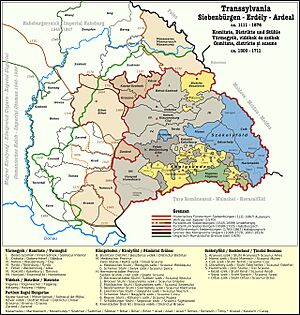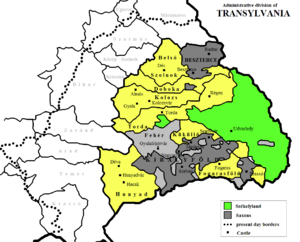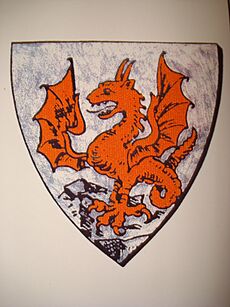Voivode of Transylvania facts for kids
The Voivode of Transylvania (German: Vojwode von Siebenbürgen; Hungarian: erdélyi vajda; Latin: voivoda Transsylvaniae; Romanian: voievodul Transilvaniei) was the highest-ranking official in Transylvania within the Kingdom of Hungary from the 12th century to the 16th century. Appointed by the monarchs, the voivodes – themselves also the heads or ispáns of Fehér County – were the superiors of the ispáns of all the other counties in the province.
They had wide-ranging administrative, military and judicial powers, but their jurisdiction never covered the whole province. The Saxon and Székely communities – organized into their own districts or "seats" from the 13th century – were independent of the voivodes. The kings also exempted some Transylvanian towns and villages from their authority over the centuries. Even so, the Voivodeship of Transylvania "was the largest single administrative entity" in the entire kingdom in the 15th century. Voivodes enjoyed income from the royal estates attached to their office, but the right to "grant lands, collect taxes and tolls, or coin money" was reserved for the monarchs. Although Roland Borsa, Ladislaus Kán and some other voivodes rebelled against the sovereign, most remained faithful royal officials.
Because of the gradual disintegration of the medieval Kingdom of Hungary in the 16th century, the last voivodes of Transylvania, who came from the Báthory family, ceased to be high-ranking officials. Instead they were the heads of state, although under Ottoman suzerainty, of a new principality emerging in the eastern territories of the kingdom. Accordingly, Stephen Báthory, the voivode elected by the Diet of the new realm, officially abandoned the title of voivode and adopted that of prince in 1576, upon his election as King of Poland.
Origins
The origin of the office is unclear. The title voivode is of Slavic origin with a meaning of "commander, lieutenant". Although Emperor Constantine VII Porphyrogennetos wrote of the voivodes or chieftains of the Hungarian tribes around 950, he seems to have adopted the term used by a Slavic interpreter. Romanian historians maintain that the title, homonymous with the one used in Wallachia and Moldavia, suggests a perpetuation of the local ruling tradition.
The border position of Transylvania led to the formation of the voivodeship, since the monarchs could not maintain direct control over this remote region. Thus the voivodes were never autonomous, but remained provincial officials of the kings. The voivodes were heads of Fehér County from 1201, which may indicate that their position had its origin in the office of that county's ispán.
Two royal charters issued in 1111 and 1113 mention one Mercurius "princeps Ultrasilvanus", but he may have been only an important landowner in Transylvania without holding any specific office. Leustach Rátót was the first individual whose title voivode was documented. He held the office in the late 12th century, but his voivodeship was mentioned by a royal charter in 1230. The earliest extant document mentioning a voivode named Legforus was issued in 1199. In addition to voivode, royal charters used the titles banus, dux and herzog for the same office in the next decades, showing that the terminology remained uncertain until the second half of the 13th century.
Functions
Jurisdiction
The territories under the jurisdiction of the voivodes are known as Voivodeship or Voivodate of Transylvania. Voivodes were the chiefs of the ispáns of the Transylvanian counties. Although the counties in Transylvania were first attested from the 1170s, earlier references to fortresses at their seats and archaeological finds suggest that a system of counties existed in the 11th century. For instance, Torda County was first mentioned in a charter of 1227, but a royal castle at Torda (Turda) had already been documented in 1097, and three burials coin-dated to the reign of Stephen I of Hungary (1000 or 1001–1038) were unearthed in the same fortress.
The ispáns of the Transylvanian counties of Doboka, Hunyad, Kolozs, Küküllő and Torda were not listed among the witnesses of royal charters from the beginning of the 13th century, hinting that their direct connection to the monarchs had by that time been interrupted. Thereafter they were employed by the voivode who appointed and dismissed them at will. Only the heads of Szolnok County remained directly connected to the monarchs for a longer period, until their office was united with the voivodeship in the 1260s. Similarly, the voivodes were simultaneously the ispáns of the nearby Arad County between 1321 and 1412.
The kings exempted some communities from the jurisdiction of the voivodes. The Diploma Andreanum, a royal charter of 1224, placed the territory of the Saxons between Broos (Szászváros, Orăștie) and Barót (Baraolt) under the authority of the Count of Hermannstadt (Nagyszeben, Sibiu), who was appointed by and directly subordinate to the monarchs. Likewise, a special royal official, the Count of the Székelys, administered the Székely community from around 1228. In the latter case, the two offices were united by custom in 1462: from then on each voivode was also appointed Count of the Székelys.
Following the Mongol invasion of 1241 and 1242, King Béla IV of Hungary exempted the inhabitants of Bilak (Mărişelu), Gyalu (Gilău), Gyulafehérvár (Alba Iulia), Harina (Herina), Tasnád (Tășnad) and Zilah (Zalău). King Charles I of Hungary granted immunity to the Saxon communities of Birthälm (Berethalom, Biertan), Kleinschelken (Kisselyk, Şeica Mică), and Mediasch (Medgyes, Mediaș) in 1315, but the same monarch annulled other communities' similar privileges in 1324. Altrodenau (Radna, Rodna) and Bistritz (Beszterce, Bistrița) received immunity in 1366.
Honour of the voivodes
The office of voivode was one of the most important royal honours in the kingdom. All income from lands attached to the Transylvanian royal castles was collected for the voivodes. They enjoyed the income from fines, but royal revenues from taxes, tolls and mines remained the kings' due.
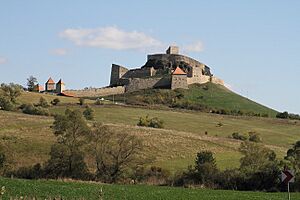
During most of the 14th century, the voivodes held the castles at Bánffyhunyad (Huedin), Boroskrakkó (Cricău), Csicsóújfalu (Ciceu-Mihăieşti), Déva (Deva), Hátszeg (Hațeg), Kőhalom (Rupea), Küküllővár (Cetatea de Baltă), Léta (Lita), Nagy-Talmács (Tălmaciu), Torja (Turia) and Újvár (Gogan Varolea), together with their lands. Additionally, the voivodes enjoyed the revenues of royal estates in Transylvania. For instance, the estates at Bonchida (Bonțida) and Vajdahunyad (Hunedoara) were attached to them for decades. However, the monarchs started to grant their castles and estates to noblemen, to the bishops of Transylvania or to the Saxon community after 1387. Consequently, Küküllővár and the lands pertaining to it remained the last piece of the "voivodal domain" in the 1450s.
The inhabitants of the Transylvanian counties were compelled to accommodate the voivodes and their officials. The "guest settlers" – privileged colonists – at Boroskrakkó, Magyarigen (Ighiu) and Romosz (Romos) were the first to be released from this duty in 1206. In Alvinc (Vinţu de Jos) and Borberek (Vurpăr), the obligation itself was not abolished, but limited to two occasions a year. Finally King Charles I exempted all Transylvanian noblemen and their serfs from this irksome duty in 1324.
The voivodes who preferred to stay in the royal court seldom resided in their province, but were represented by their deputies. The earliest record of a vicar of a voivode dates from 1221. Later the title "vice-voivode", first documented in 1278, came into general use. In addition to vice-voivodes and ispáns of the Transylvanian counties, the voivodes appointed the castellans of the royal fortresses. They tended to choose from among the noblemen serving in their own retinue, which ensured that their followers received a fair share of their revenues. Accordingly, when a king dismissed a voivode, his men were also replaced with his successor's men.
Judicial functions
Along with the palatine, the judge royal and the ban, the voivode was one of the Kingdom's highest judges. In this capacity, he was authorized to issue "credible" charters. The earliest preserved charter dates to 1248. The voivodes or their vice-voivodes always heard disputes together with local noblemen who knew local customs. Initially, the voivodes and their deputies held their courts at Marosszentimre (Sântimbru), but they heard disputes at their own abodes from the 14th century. Voivodes rarely headed their courts after the 1340s and were rather represented by their deputies.
Although limiting his own jurisdiction, in 1342 voivode Thomas Szécsényi recognized the right of Transylvanian noblemen to judge legal cases of peasants who held parcels of land in their estates, "with the exception of three cases, such as robbery, highway robbery, and violent trespass". This concession was confirmed in 1365 by King Louis I of Hungary. Furthermore, the monarchs granted jus gladii (the right to the application of capital punishment) to more and more nobles in the course of the same century.
According to customary law, noblemen could not be sued outside the province until the 15th century. King Louis I even prohibited all prelates and noblemen who owned lands in Transylvania from bringing legal proceedings of lesser importance concerning these estates to the royal court. Nevertheless, legal actions between Transylvanians and the inhabitants of other parts of the kingdom remained outside the jurisdiction of the voivodes. Litigants could appeal to the royal court against the decision of the voivode from the 14th century, but the voivode often remained involved in the proceedings. Legislation prescribed that appeals against decisions of the voivodes were to be addressed to the judge royal only from 1444.
"General assemblies" convoked and presided over by the principal judges of the realm became important judicial institutions in the last decade of the 13th century. General assemblies for the representatives of the Transylvanian counties were presided over by the voivode or the vice-voivode. The first such assembly was held on June 8, 1288. They became important legal institutions from 1322. Thereafter they were held on a regular basis, at least once a year at Keresztes (Cristiş) near Torda.
With the authority of the monarch, the voivodes occasionally also invited the representatives of the Saxon and Székely communities to the counties' general meetings. This contributed to the development of legal connections among the future "Three Nations of Transylvania". The threat from the peasants' revolt of 1437 gave rise to the first joint meeting of the Hungarian noblemen and the representatives of the Saxons and the Székelys, which was convoked without a former royal authorization by the vice-voivode. Romanian cneazes were only once, in 1355, invited to the general assembly. Otherwise, the vice-voivodes organized separate meetings for them.
Military functions
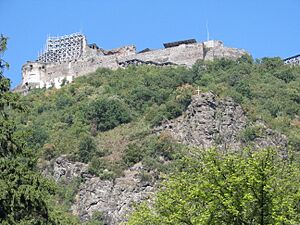
The etymology of the title ("commander") suggests that voivodes had significant military duties. They were the supreme leader of the troops recruited in the counties under their jurisdiction. Although law obliged noblemen to fight in the king's army, Transylvanian nobles fought under the command of the voivode. Furthermore, the voivodes had their own private retinue, formed primarily by armed noblemen. Their right to raise an army under their own flag was confirmed by legislation in 1498.
Military functions are attested, for instance, by Pousa, the voivode at the time of the Mongol invasion who fell in battle on March 31, 1241. Voivode Lawrence of the Aba clan fought in the royal army in a war against Austria in 1246. A Mongol army attacking the southern regions of Transylvania was defeated by voivode Ernye of the Ákos clan in 1260. Roland Borsa fought against the invading Mongols in 1285.
Voivode Nicholas Csáki failed to repel an Ottoman invasion of Transylvania in 1420. In contrast, John Hunyadi, voivode between 1441 and 1446, defeated a major Ottoman army at Gyulafehérvár in 1442. His successor Stephen Báthory likewise won a resounding victory at Breadfield (Hungarian: Kenyérmező, Romanian: Câmpul Pâinii) on October 13, 1479. By contrast, John Zápolya (Szapolyai), the last voivode before the battle of Mohács on August 29, 1526 did not arrive to the battlefield in time, summoned too late. The battle ended with the Ottomans' annihilation of the royal army. King Louis II of Hungary was also killed on the battlefield.
Monarchs and their voivodes
Appointment and dismissal
The voivodes had power concentrated in their hands, impelling the monarchs to replace them frequently: forty-three voivodes ruled between 1199 and 1288. Monarchs usually refrained from appointing as voivode noblemen who owned Transylvanian estates. Michael of the Kacsics clan was the first voivode to receive a land grant in the province, around 1210. However, these originally uninhabited lands along the upper courses of the river Mureș (Maros) were confiscated in 1228.
The era beginning with 1288 was characterized by longer periods in office. Roland Borsa survived 10 years, while his successor, Ladislaus Kán, lasted 20 years. This apparent stability was the consequence of the weakening of central government under the last two kings of the Árpád dynasty, Ladislaus IV (1272–1290) and Andrew III (1290–1301). Royal power was only restored in the reign of Charles I (1308–1342) who one by one defeated the rebellious noblemen throughout his kingdom.
In Transylvania, he was assisted by Thomas Szécsényi, the voivode between 1321 and 1342. Historian Ioan-Aurel Pop characterizes the following period as including "voidvodal dynasties": five members of the Lackfi family (father and four sons) were successively appointed between 1356 and 1376. Likewise, Nicholas Csáki (1415 to 1426) was succeeded by his son Ladislaus. The pair preferred to entrust their vice-voivode Roland Lépes to represent them, instead of visiting the province. From the middle of the 15th century it was not unusual for two or even three noblemen to hold the office at the same time. For instance, John Hunyadi was appointed together with Nicholas Újlaki in 1441 by King Wladislas I.
Cooperation and conflicts
The Mongols comprehensively plundered the eastern territories of the Kingdom of Hungary, including Transylvania, during both their invasion in 1241 and their withdrawal the following year. The consolidation of the province was the main task of Lawrence of the Aba clan, who the office for 10 years from 1242. One of his successors, appointed by King Béla IV, Ernye of the Ákos clan, was dismissed in 1260 by the king's son, Stephen who had just taken over Transylvania with the title of duke. The duke's action showed emerging tensions between father and son, rather than conflicts between the duke and Ernye.
The first years of the reign of the minor Ladislaus IV were characterized by armed conflicts between parties of the leading noble families. Although Roland Borsa, voivode in 1282 and between 1284 and 1294, was initially among the nobles assisting the king in consolidating royal power, he himself became the source of new conflicts. First he prevented the canons of the Gyulafehérvár Chapter from collecting their income in 1289. Next he unlawfully compelled noblemen and Saxon landowners in Transylvania to accommodate him and his retinue. Later Borsa fought the bishop of Várad (Oradea) and even resisted King Andrew III who besieged him in the fortress of Adorján (Adrian) at Szalárd (Sălard) for three months in 1294.
Borsa's successor Ladislaus Kán went even further by usurping royal prerogative during his voivodeship between 1294 and 1315. He arbitrarily assumed the titles of count of Bistritz, Hermannstadt and the Székelys to expand his authority over Saxon and Székely communities exempted from voivodal authority. He set up a tax-collecting body, seemingly covering the entire province. He captured Otto of Bavaria, a claimant to the Hungarian throne and seized the Holy Crown of Hungary from him in the first half of 1307. He handed the royal diadem to King Charles I in 1310, but continued to rule Transylvania de facto independently until his death in 1315. His son of the same name declared himself voivode, a title even used by the monarch when referring to him in a charter of August 12, 1315. Dózsa Debreceni, the voivode King Charles I appointed in 1318, defeated some rebellious minor lords, but royal authority in Transylvania was only restored by Thomas Szécsényi in the 1320s.
The next rebellion against royal power in Transylvania broke out in 1467. Irritated by a new tax that King Matthias Corvinus had just introduced, representatives of the Three Nations concluded an alliance against the monarch and declared the three incumbent voivodes (the brothers Counts John and Sigismund Szentgyörgyi and Berthold Ellerbach) their leaders. The king put down the revolt in a week, but did not sentence the three voivodes, because their active role in the revolt was never proven.
End of the office
The barons did not find a compromise candidate to succeed King Louis II who perished in the battle of Mohács in 1526. First the voivode, John Szapolyai was proclaimed king by a group of nobles, but the opposing party also elected its own king, Ferdinand I, a scion of the Habsburg family, by the end of the year.

King John I accepted Ottoman suzerainty in 1529, but in the Treaty of Nagyvárad of 1538 he conceded the right of the Habsburgs to succeed him after his death. At that point his voivodes, Stephen Majláth and Emeric Balassa, decided to separate Transylvania from the kingdom in order to save the province from an Ottoman invasion. Although other leading Transylvanian noblemen soon joined them, King John I overcame their rebellion in some weeks.
Following John's death, Ottoman troops occupied the central parts of the Kingdom of Hungary in 1541. Sultan Suleiman I permitted the king's widow, Queen Isabella, to retain the territories east of the river Tisza (Tisa), including Transylvania, in the name of her infant son, John Sigismund. George Martinuzzi, bishop of Várad, soon started to reorganize the government in the name of the dowager queen and her son. The Ottomans assisted the bishop by capturing his opponent, Stephen Majláth, although the sultan had earlier confirmed the latter's position as voivode. An assembly of the Three Nations elected George Martinuzzi as governor on behalf of the infant king in 1542.
The office of voivode was vacant until September 1549, when Ferdinand (who had not given up the idea of reuniting the territories of the entire kingdom) appointed Martinuzzi to this post. However, Isabella and his son only left their realm in 1551. Thereafter, Transylvania was again under the rule of voivodes appointed by the monarch, ending with István Dobó. He administered the province until 1556, when Isabella and John Sigismund returned.
John Sigismund ceased to style himself king of Hungary after the Treaty of Speyer of 1570, under which he adopted the title of "Prince of Transylvania and Lord of parts of the Kingdom of Hungary". His successor Stephen Báthory (who was elected ruler by the assembly of the Three Nations) revived the title of voivode, initially for himself. He adopted the title of "prince of Transylvania" when he was elected king of Poland in 1576. At the same time, he conferred the title voivode on his brother Christopher in 1576. Christopher Báthory was followed in 1581 by his minor son Sigismund who continued to style himself voivode until the death of his uncle, Stephen Báthory in 1586. Sigismund Báthory's title of prince was acknowledged in 1595 by Emperor Rudolph (also king of Hungary).
List of voivodes
Twelfth century
| Term | Incumbent | Monarch | Notes | Source |
|---|---|---|---|---|
| c. 1111–c. 1113 | Mercurius | Coloman | "princeps Ultrasilvanus", but maybe only a distinguished nobleman | |
| 1176–c. 1196 | Leustach of the Rátót clan | Béla III | first voivode attested by a royal charter (from 1230); leader of Hungarian reinforcements sent to the Byzantine Empire against the Seljuks in the Battle of Myriokephalon of 1176 | |
| 1199–1200 | Legforus | Emeric | his voivode title is documented by the earliest royal charter (from 1199) | |
| 1200 | Eth of the Geregye clan | Emeric | also ispán of Fehér County |
Thirteenth century
| Term | Incumbent | Monarch | Notes | Source |
|---|---|---|---|---|
| 1201 | Julius of the Kán clan | Emeric | first rule; also ispán of Fehér County | |
| 1201 | Nicholas (I) | Emeric | according to a non-authentic charter also in 1202 | |
| 1202–1206 | Benedict, son of Korlát | Emeric, Ladislaus III, Andrew II | first rule | |
| 1206 | Smaragd of the Smaragd clan | Andrew II | ||
| 1208–1209 | Benedict, son of Korlát | Andrew II | second rule; conspired against the king who exiled him | |
| 1209–1212 | Michael of the Kacsics clan | Andrew II | first voivode receiving land grant in Transylvania | |
| 1212–1213 | Berthold of Merania | Andrew II | brother of Gertrud, Andrew II's queen; also archbishop of Kalocsa | |
| 1213 | Nicholas (II) | Andrew II | ||
| 1214 | Julius of the Kán clan | Andrew II | second rule; also ispán of Szolnok County (1214) | |
| 1215 | Simon of the Kacsics clan | Andrew II | ||
| 1216–1217 | Ipoch of the Bogátradvány clan | Andrew II | ||
| 1217 | Raphael | Andrew II | he might have been in office in 1218 (Kurt W. Treptow, Marcel Popa) | |
| 1219–1221 | Neuka | Andrew II | ||
| 1221–1222 | Paul, son of Peter | Andrew II | ||
| 1227 | Pousa, son of Sólyom | Andrew II | first rule | |
| 1229–1231 | Julius of the Rátót clan | Andrew II | ||
| 1233–1234 | Denis of the Türje clan | Andrew II | ||
| 1235 | Andrew, son of Serafin | Béla IV | also ispán of Pozsony County (1235) | |
| 1235–1241 | Pousa, son of Sólyom | Béla IV | second rule; died fighting against the invading Mongols | |
| 1242–1252 | Lawrence | Béla IV | also ispán of Valkó County | |
| b. 1261 | Ernye of the Ákos clan | Béla IV | banus quondam Transiluanus in 1261 | |
| 1261 | Csák of the Hahót clan | Béla IV | banus Transilvanus; also ispán of Szolnok County (1261); the king's son, Stephen is duke of Transylvania | |
| 1263–1264 | Ladislaus (II) of the Kán clan | Béla IV | first rule; also ispán of Szolnok County (1263–1264); the king's son, Stephen is duke of Transylvania | |
| 1267–1268 | Nicholas of the Geregye clan | Béla IV | first rule; also ispán of Szolnok County (1267–1268); it is presumable, he held the dignity uninterruptedly from 1264 to 1270; the king's son, Stephen is duke of Transylvania | |
| 1270–1272 | Matthew of the Csák clan | Stephen V | first rule; also ispán of Szolnok County (1270–1272) | |
| 1272–1273 | Nicholas of the Geregye clan | Ladislaus IV | second rule; also ispán of Szolnok County (1272–1273) | |
| 1273 | John | Ladislaus IV | also ispán of Szolnok County (1273) | |
| 1273–1274 | Nicholas of the Geregye clan | Ladislaus IV | third rule; also ispán of Szolnok County (1273–1274) | |
| 1274 | Matthew of the Csák clan | Ladislaus IV | second rule; also ispán of Szolnok County (1274) | |
| 1274 | Nicholas of the Geregye clan | Ladislaus IV | fourth rule; maybe in 1275 (Kurth W. Treptow, Marcel Popa); also ispán of Szolnok County (1274) | |
| 1274–1275 | Matthew of the Csák clan | Ladislaus IV | third rule; also ispán of Szolnok County (1274–1275) | |
| 1275 | Ugrin of the Csák clan | Ladislaus IV | first rule; also ispán of Szolnok County (1275) | |
| 1275–1276 | Ladislaus (II) of the Kán clan | Ladislaus IV | second rule; also ispán of Szolnok County (1275–1276) | |
| 1276 | Ugrin of the Csák clan | Ladislaus IV | second rule; also ispán of Szolnok County (1276) | |
| 1276 | Matthew of the Csák clan | Ladislaus IV | fourth rule; also ispán of Szolnok County (1276) | |
| 1277 | Nicholas of the Pok clan (Meggyesi) | Ladislaus IV | first rule; also ispán of Szolnok County (1277) | |
| 1278–1280 | Finta of the Aba clan | Ladislaus IV | also ispán of Szolnok County (1278–1280); captured the king | |
| 1280 | Stephen, son of Tekesh | Ladislaus IV | also ispán of Szolnok County (1280) | |
| 1282 | Roland of the Borsa clan | Ladislaus IV | first rule; also ispán of Szolnok County (1282) | |
| 1283 | Apor of the Péc clan | Ladislaus IV | also ispán of Szolnok County (1283) | |
| 1284–1294 | Roland of the Borsa clan | Ladislaus IV, Andrew III | second rule; also ispán of Szolnok County (1284–1294); successfully fought against the invading Mongols in 1285; rebelled against both kings | |
| 1287–c. 1288 (?) | Mojs of the Ákos clan | Ladislaus IV | only a non-authentic charter refers to him as voivode, if so, he was also ispán of Szolnok County in the same period | |
| 1295–1314 or 1315 | Ladislaus (III) of the Kán clan | Andrew III | de facto independent ruler; also ispán of Szolnok County (1295–1314) |
Fourteenth century
| Term | Incumbent | Monarch | Notes | Source |
|---|---|---|---|---|
| c. 1315 | Ladislaus (IV) of the Kán clan | self declared voivode, son of Ladislaus (III) Kán (1295–1314) | ||
| 1315–1316 | Nicholas Meggyesi | Charles I | second rule; unable to take up his office; also ispán of Szolnok County (1315–1316) | |
| 1318–1321 | Dózsa Debreceni | Charles I | also ispán of Szolnok County (1318–1321) | |
| 1321–1342 | Thomas Szécsényi | Charles I | also ispán of Szolnok County (1321–1342), ispán of Arad County (1330–1342), and ispán of Csongrád County (1330) | |
| 1342–1344 | Nicholas Sirokai | Louis I | also ispán of Arad and Szolnok Counties (1342–1344) | |
| 1344–1350 | Stephen Lackfi | Louis I | also ispán of Arad and Szolnok Counties (1344–1350) | |
| 1350–1351 | Thomas Gönyűi or Csór | Louis I | appointed by Stephen, duke of Transylvania, the monarch's brother; also ispán of Arad and Szolnok Counties (1350–1351) | |
| 1351–1356 | Nicholas Kont of Orahovica | Louis I | also ispán of Arad and Szolnok Counties (1351–1356) | |
| 1356–1359 | Andrew Lackfi | Louis I | brother of Stephen Lackfi (1344–1350); also ispán of Arad and Szolnok Counties (1356–1359) | |
| 1359–1367 | Denis Lackfi | Louis I | son of Stephen Lackfi (1344–1350); also ispán of Arad and Szolnok Counties (1359–1367) | |
| 1367–1368 | Nicholas Lackfi, Jr. | Louis I | son of Stephen Lackfi (1344–1350); also ispán of Arad and Szolnok Counties (1367–1368) | |
| 1369–1372 | Emeric Lackfi | Louis I | son of Stephen Lackfi (1344–1350); also ispán of Arad and Szolnok Counties (1369–1372) | |
| 1372–1376 | Stephen Lackfi of Csáktornya | Louis I | first rule; son of Stephen Lackfi (1344–1350); also ispán of Szolnok County (1372–1376) | |
| 1376–1385 | Ladislaus Losonci, Sr. | Louis I, Mary | first rule; also ispán of Szolnok County (1376–1385) | |
| 1385–1386 | Stephen Lackfi of Csáktornya | Charles II | second rule; also ispán of Szolnok County (1385–1386) | |
| 1386–1392 | Ladislaus Losonci, Sr. | Sigismund, Mary | second rule; also ispán of Szolnok County (1386–1392) | |
| 1392–1393 | Emeric Bebek | Sigismund, Mary | also ispán of Szolnok County (1392–1393) | |
| 1393–1395 | Frank Szécsényi | Sigismund, Mary | also ispán of Arad, Csongrád, and Szolnok Counties (1393–1395) | |
| 1395–1401 | Stibor of Stiboricz | Sigismund | first rule; also ispán of Arad and Szolnok Counties (1395–1401) |
Fifteenth century
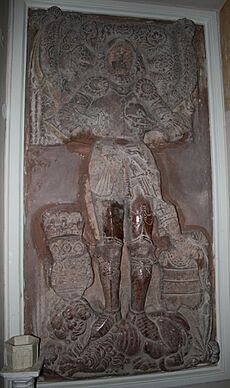
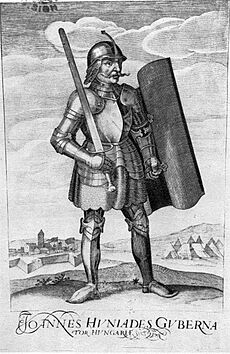
| Term | Incumbent | Monarch | Notes | Source |
|---|---|---|---|---|
| 1401 | Simon Szécsényi | Sigismund | also ispán of Szolnok County (1401) | |
| 1402–1403 | Nicholas Csáki | Sigismund | first rule; also ispán of Békés, Bihar, Csanád, Csongrád, Keve, Krassó, Szolnok, Temes, and Zaránd Counties (1402–1403); a leader of the party supporting King Ladislaus of Naples's claim to the Hungarian throne in 1403 | |
| Nicholas Marcali | also ispán of Békés, Csanád, Csongrád, Keve, Krassó, Szolnok, Temes, and Zaránd Counties (1402–1403); joined the party supporting King Ladislaus of Naples's claim to the Hungarian throne in 1403 | |||
| 1403–1409 | John Tamási | Sigismund | also ispáns of Szolnok County (1403–1409) | |
| James Lack of Szántó | ||||
| 1409–1414 | Stibor of Stiboricz | Sigismund | second rule; also ispán of Szolnok County (1409–1414), Nyitra and Trencsén, Lord of all Váh | |
| 1415–1426 | Nicholas Csáki | Sigismund | second rule; also ispán of Békés, Bihar, and Szolnok Counties (1415–1426) | |
| 1426–1437 | Ladislaus Csáki | Sigismund | second rule; together with Peter Cseh of Léva (1436–1437); also ispán of Közép-Szolnok County (1426–1437), ispán of Szatmár County (1430–1437), and ispán of Bihar County (1433–1437); routed by the rebelling peasants at Dés (Dej); | |
| 1436–1438 | Peter Cseh of Léva | Sigismund, Albert | together with Ladislaus Csáki (1426–1437) | |
| 1438–1441 | Desiderius Losonci | Albert, Ladislaus V | left Ladislaus V's party and became Wladislas I's partisan in 1441 | |
| 1440–1441 | Ladislaus Jakcs | Wladislas I | ||
| Michael Jakcs | ||||
| 1441–1458 | Nicholas Újlaki | Wladislas I, Ladislaus V | first rule; together with John Hunyadi (1441–1446), with Emeric Bebek (1446–1448), and with John Rozgonyi (1449–1458); also ban of Macsó and commander of Nándorfehérvár (Beograd, Serbia) (1441–1458), count of the Székelys (1441–1446), ispán of Csanád, Csongrád, Máramaros, and Temes Counties (1441–1446), ispán of Arad County (1444–1446), ban of Severin (1445–1446), and ban of Slavonia (1457) | |
| 1441–1446 | John Hunyadi | Wladislas I | together with Nicholas Újlaki (1441–1458); also commander of Nándorfehérvár (Beograd, Serbia) (1441–1446), count of the Székelys (1441–1446), ispán of Csanád, Csongrád, and Temes Counties (1441–1446), ispán of Arad and Bihar Counties (1443–1446), ispán of Közép-Szolnok, Kraszna, Szabolcs, Szatmár, and Ugocsa Counties (1444–1446), ispán of Bereg and Máramaros Counties (1445–1446), and regent-governor of the Kingdom of Hungary (1446) | |
| 1446–1448 | Emeric Bebek | elected by the Diet of Hungary | together with Nicholas Újlaki (1441–1458); also ispán of Abaúj County (1446–1448) and judge of the Jász people (1446–1448); died fighting against the Ottomans in the second battle of Kosovo | |
| 1449–1458 | John Rozgonyi | first rule; together with Nicholas Újlaki (1441–1458); also ispán of Sopron and Vas Counties (1449–1454), count of the Székelys (1457–1458) | ||
| 1459–1461 | Ladislaus Kanizsai | Matthias | together with John and Sebastian Rozgonyi (1459–1460), and with his brother, Nicholas Kanizsai (1461) | |
| 1459–1460 | John Rozgonyi | Matthias | together with Ladislaus Kanizsai (1459–1461), and with Sebastian Rozgonyi (1459–1460) | |
| 1459–1460 | Sebastian Rozgonyi | Matthias | together with Ladislaus Kanizsai (1459–1461), and with John Rozgonyi (1459–1460) | |
| 1461 | Nicholas Kanizsai | Matthias | together with his brother, Ladislaus Kanizsai (1459–1461) | |
| 1462–1465 | Nicholas Újlaki | Matthias | second rule | |
| John Pongrác of Dengeleg | Matthias | first rule | ||
| 1465–1467 | Bertold Ellerbach of Monyorókerék | Matthias | dismissed after rebellious Transylvanian nobles elected them to their leaders | |
| Count Sigismund Szentgyörgyi | brothers of Count Peter Szentgyörgyi (1498–1510); dismissed after rebellious Transylvanian nobles elected them to their leaders | |||
| Count John Szentgyörgyi | ||||
| 1468–1474 | Nicholas Csupor of Monoszló | Matthias | together with John Pongrác of Dengeleg (1468–1472) | |
| 1468–1472 | John Pongrác of Dengeleg | Matthias | second rule; together with Nicholas Csupor of Monoszló (1468–1474) | |
| 1472–1475 | Blaise Magyar | Matthias | leader of Hungarian reinforcements sent to Stephen the Great, prince of Moldavia in the Battle of Vaslui of 1475 | |
| 1475–1476 | John Pongrác of Dengeleg | Matthias | third rule | |
| 1478–1479 | Peter Geréb of Vingárt | Matthias | ||
| 1479–1493 | Stephen (V) Báthory of Ecsed | Matthias, Wladislas II | ||
| 1493–1498 | Bartholomew Drágfi of Béltek | Wladislas II | together with Ladislaus Losonci, Jr. (1493–1494); suppressed a rebellion of the Székelys | |
| 1493–1495 | Ladislaus Losonci, Jr. | Wladislas II | together with Bartholomew Drágfi of Béltek (1493–1498) | |
| 1498–1510 | Count Peter Szentgyörgyi | Wladislas II | brother of Counts Sigismund and John Szentgyörgyi (1465–1467) |
Sixteenth century
| Term | Incumbent | Monarch | Notes | Source |
|---|---|---|---|---|
| 1510–1526 | John Zápolya (Szapolyai) | Wladislas II, Louis II | became king of Hungary | |
| 1527–1529 | Péter Perényi | John Zápolya | left John Zápolya's party and became a partisan of Ferdinand I | |
| 1530–1534 | Stephen (VIII) Báthory of Somlyó | Ferdinand I | ||
| 1530 | Bálint Török | |||
| 1530–1534 | Jerome Laski | John Zápolya | conspired against the king, who imprisoned him | |
| 1533–1534 | Emeric Czibak | |||
| 1534–1540 | Stephen Majláth of Szunyogszeg | John Zápolya | together with Emeric Balassa of Gyarmat (1538–1540); planned to secede Transylvania from the Kingdom of Hungary, but was captured by the Ottomans | |
| 1538–1540 | Emeric Balassa of Gyarmat | John Zápolya | together with Stephen Majláth of Szunyogszeg (1534–1540); fled when the Ottomans invaded Transylvania | |
| 1551 | George Martinuzzi | Ferdinand I | also elected governor of Transylvania on behalf of the minor John Sigismund, the elected king (1543–1551) | |
| 1552–1553 | Andrew Báthory of Ecsed | Ferdinand I | resigned | |
| 1553–1556 | Stephen Dobó | Ferdinand I | last voivodes appointed by a king of Hungary | |
| Francis Kendi | ||||
| 1571–1576 | Stephen Báthory | elected by the Three Nations and confirmed by the Ottoman Sultan Selim II; declared himself prince of Transylvania after his election as king of Poland in 1576 | ||
| 1576–1581 | Christopher Báthory | Stephen Báthory | ||
| 1581–1586 | Sigismund Báthory | Stephen Báthory | last voivode; his title of prince of Transylvania confirmed in 1595 by Emperor Rudolph |
See also
- Vice-voivode of Transylvania
- Ban of Croatia
- Ban of Slavonia
- Governor of Transylvania
- Palatine (Kingdom of Hungary)
- Transylvania in the Middle Ages
- List of rulers of Transylvania
- List of chancellors of Transylvania


